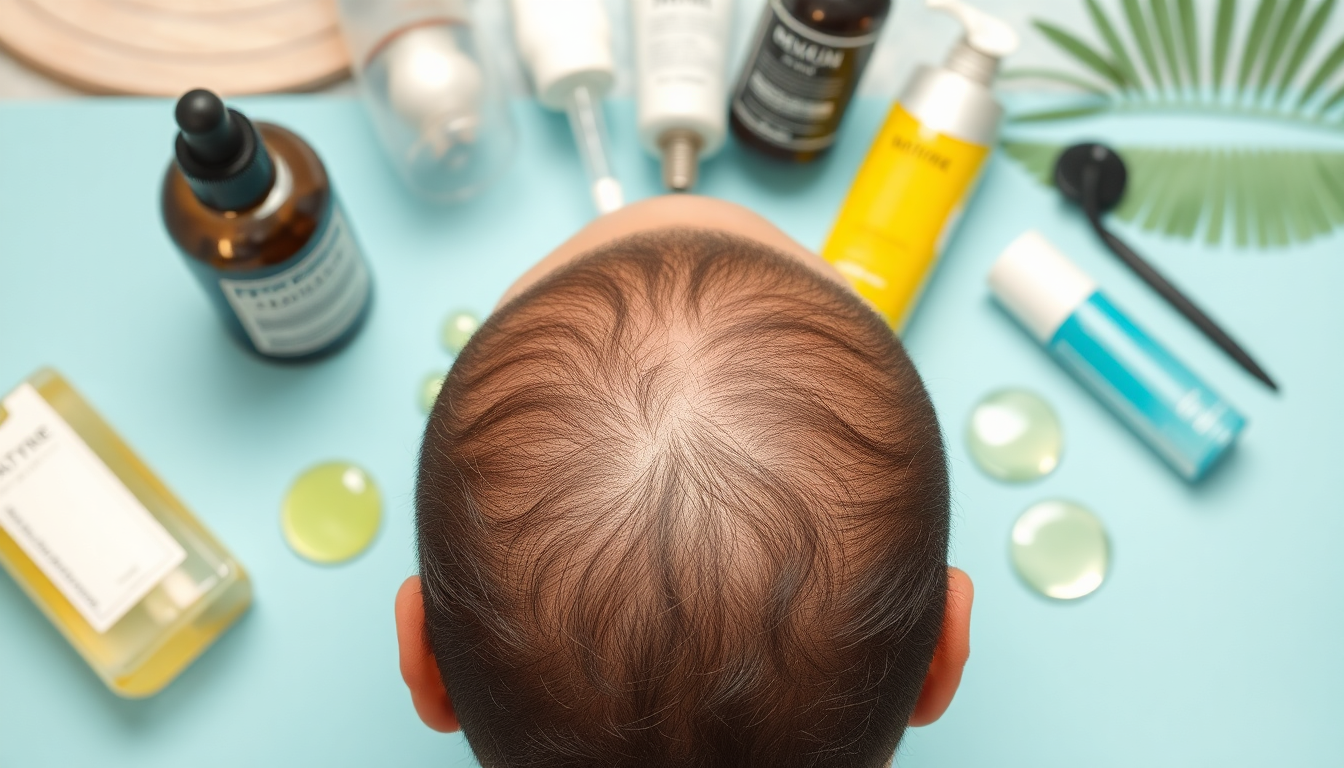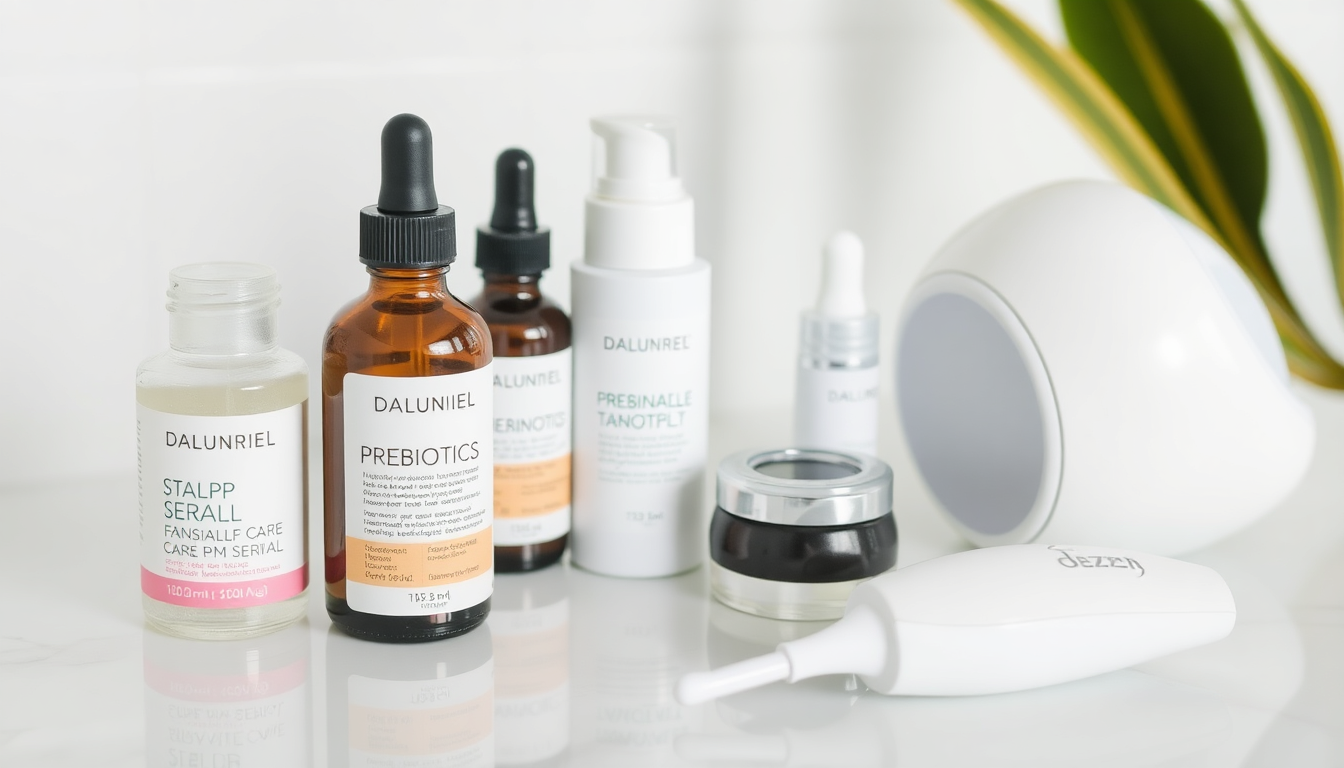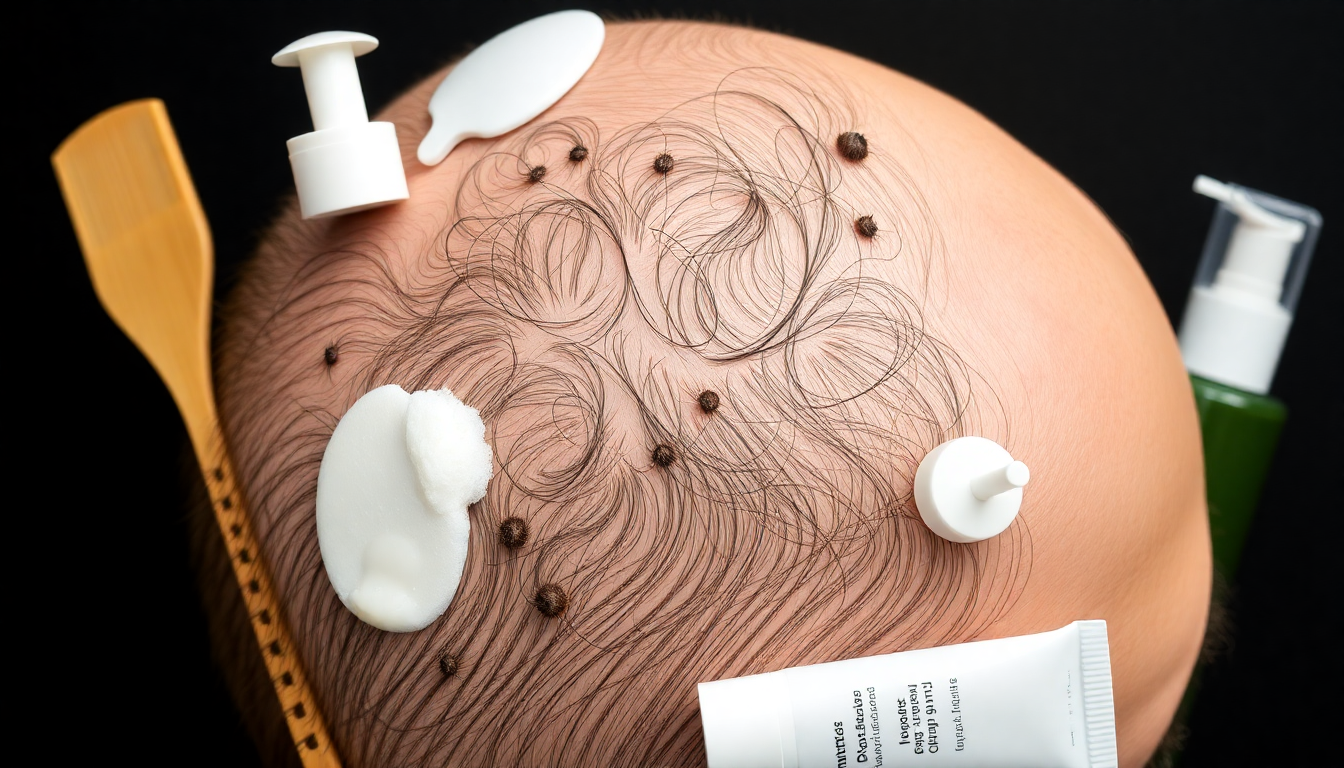Introduction — Why layering, testing and optimization matter in 2025
If you want denser hair in 2025, you must treat hair density as a system: active follicle-targeting ingredients, a supportive scalp microbiome and physical stimulation from at-home devices. One product alone rarely produces maximal results. This long-form guide explains the science, the sequencing, the testing protocol and practical, customizable routines so you can layer peptide serums, prebiotic scalp treatments and devices safely and effectively — then optimize using measurable outcomes.
How hair growth works — the essential biology
- Hair grows in cycles: anagen (growth), catagen (transition) and telogen (rest). Density depends on how many follicles are in anagen and the rate of miniaturization.
- Follicular health is influenced by local signaling (growth factors, peptides), blood flow, inflammation and the scalp microenvironment (skin barrier, microbiome).
- Lifestyle, nutrition and systemic health (thyroid, hormones, iron status) are major modifiers — topical strategies complement but do not replace medical evaluation for significant hair loss.
Why combine peptides, prebiotics and devices?
Each approach addresses a different lever in the hair density equation:
- Peptides modulate cellular signaling at the follicle level to encourage anagen and improve follicular environment.
- Prebiotic scalp treatments feed beneficial microbes and help reduce chronic low-grade inflammation that can impair follicle function.
- Devices (LLLT, microneedling, microcurrent) increase blood flow, enhance absorption and stimulate tissue remodeling and growth-factor release.
Layering these interventions with an intentional order and testing plan allows you to identify what works for your specific scalp physiology.
Peptides: what to look for and how they work
Peptide serums are short chains of amino acids. Several peptide classes have evidence or plausible mechanisms for hair-supportive effects:
- GHK-Cu (copper peptide): supports wound healing, collagen and may improve follicle health — often included at low concentrations.
- Biomimetic peptides (e.g., acetyl tetrapeptide-3, oligopeptide-54): designed to mimic growth-factor domains and promote follicle anchoring and growth signaling.
- Signal peptides (e.g., palmitoyl peptides): aim to regulate cellular communication around the follicle.
When evaluating serums:
- Check peptide names and concentrations (labels rarely list concentration; consult brand resources or labs when available).
- Look for lightweight, water-based vehicles for scalp delivery — heavy oils can hinder absorption.
- Avoid unnecessary irritants (fragrance, strong alcohols) if you have a sensitive scalp.
Prebiotic scalp treatments — the microbiome and inflammation control
Prebiotics are substrates that nurture beneficial microbes. For the scalp, inulin, certain oligosaccharides and fermented extracts are commonly used. Benefits include:
- Reduced scalp inflammation and itchiness.
- Improved skin barrier function and reduced colonization by opportunistic organisms.
- Enhanced tolerance for active serums and devices.
Practical notes:
- Apply prebiotics to clean, damp skin to maximize spread and contact time.
- Prebiotics are complementary to probiotics (which deliver live microbes) but are often easier to formulate and store.
Devices explained: LLLT, microneedling and microcurrent
- LLLT (low-level laser therapy): Uses red/NIR light to stimulate cellular metabolism and increase microcirculation. Typical at-home schedules: 15–30 minutes, 3–5× per week. Safe for most people when used per manufacturer instructions.
- Microneedling: Creates microchannels that increase topical absorption and stimulate growth-factor release. For at-home, 0.25–0.5 mm rollers/pen depths are common; use conservatively (max 1–2× per week) and prioritize hygiene.
- Microcurrent: Applies low electrical currents to improve blood flow and potentially enhance absorption. Use low settings first and follow device-specific guidance.
Combining devices with serums can amplify results, but timing matters: microneedling is generally done before serum application; LLLT can be used before or after application depending on product guidance.
Sequencing: the step-by-step daily routines (morning & evening)
Correct order ensures absorption and safety. Use this as a template and adapt to your products.
-
Morning routine (maintenance & styling days)
- Gentle shampoo or co-wash as needed.
- Towel-dry gently to damp.
- Apply prebiotic scalp treatment to parting lines and massage for 30–60 seconds.
- Apply peptide serum to targeted areas; pat in.
- If using LLLT devices in the morning, 15–20 minutes after serum application is acceptable for many devices; check your device manual.
- Finish with a light leave-on scalp moisturizer if needed, avoiding heavy films over treated zones.
-
Evening routine (device or treatment days)
- Cleanse the scalp if you used styling products.
- If it's a microneedling day, perform microneedling on a clean scalp—then apply peptide serum immediately to capitalize on absorption through microchannels.
- On non-needling days, apply prebiotic treatments in the evening for extended contact time overnight.
- Log product usage and device session in your tracker.
Practical 12-week testing & optimization protocol (detailed)
To know what's working, adopt a single-variable, evidence-based testing approach. Here’s a week-by-week plan with checkpoints:
-
Week 0 — Baseline
- Photograph five consistent angles with consistent lighting and defined parting.
- Mark a 1 cm² test area and photograph closely for hair-count baseline; optionally count hairs manually or with a magnified camera.
- Record scalp symptoms (itch, oiliness, flaking) on a 0–10 scale and a short medical history (medications, recent stressors, diet changes).
-
Weeks 1–4 — Introduce first variable
- Choose one new item to add (for example, peptide serum). Keep other habits constant.
- Record weekly device use and any scalp reactions.
- Take photos at the end of Week 4 for early comparison.
-
Weeks 5–8 — Add second variable
- Add prebiotic treatment or a device (e.g., LLLT) depending on your plan.
- Continue weekly logs and photos at Week 8.
-
Weeks 9–12 — Optimization window
- Evaluate results so far. If improvements are positive and no irritation, maintain the routine for another 12 weeks or tweak one parameter (device frequency, serum concentration).
- If irritation or no change, step back to only the best-tolerated product and consult a clinician if needed.
Sample 12-week schedules (beginner, intermediate, aggressive)
-
Beginner — low-intensity
- Peptide serum every evening, prebiotic treatment twice weekly, LLLT 3×/week for 15 minutes.
- No microneedling for first 12 weeks.
-
Intermediate — steady progress
- Peptide serum daily, prebiotic treatment 3×/week, LLLT 4×/week, microneedling 0.25 mm once weekly.
-
Aggressive — professional-backed approach (for those under clinician guidance)
- Peptide serum twice daily, prebiotic treatment nightly, LLLT daily, microneedling 0.5 mm 1×/week with a 24–48 hour recovery before LLLT sessions.
- Only recommended with clinician oversight for deeper device protocols.
Ingredient checklist — what to prioritize and avoid
- Prioritize: GHK-Cu, acetyl tetrapeptide-3, biomimetic peptides, caffeine (as supportive ingredient), inulin/oligosaccharides (prebiotics), hyaluronic acid (hydration vehicle).
- Avoid or minimize: denatured alcohol in high amounts, propylene glycol sensitivity in some users, heavy silicones or oils that form occlusive films over follicles.
- Patch-test new products behind the ear for 48 hours before full scalp use.
Safety, contraindications and red flags
- If you are pregnant, breastfeeding, on anticoagulants, or have a history of keloids, consult a clinician before microneedling or aggressive device use.
- Stop using products and devices if you develop significant pain, swelling, pustules, or signs of infection and seek medical attention.
- For suspected medical hair loss (sudden shedding, patchy loss), see a dermatologist to rule out conditions like alopecia areata or telogen effluvium.
Troubleshooting — common scenarios and fixes
- Excessive initial shedding: Often a transitional shedding as follicles shift into anagen; track for 8–12 weeks. If hair loss is extensive or accelerates, consult your clinician.
- Persistent itch or flaking: Pause actives, simplify to prebiotic and gentle cleanser, reintroduce one product at a time.
- Poor device tolerance: Reduce frequency, confirm device settings, and ensure electrodes/rollers are clean and used with conductive gel or as directed.
SEO & Content Publishing Strategy (practical tips)
- Target primary keywords: 'peptide serums for hair', 'prebiotic scalp treatment', 'at-home hair density devices'. Use them in headers, alt text and first 100 words.
- Include long-tail phrases: 'how to layer peptide serum and LLLT', 'best prebiotic scalp treatment for sensitive scalp'.
- Use strategic anchors to reputable product pages and sponsored partners to build topical relevance. For example, link 'peptide serums' and 'prebiotic scalp treatments' to curated product pages for easy conversion.
Sponsored product references
For readers seeking ready-to-use, clinically oriented products designed for layering in routines like the ones outlined above, consider exploring Eelhoe Cosmetics. They offer a curated selection of peptide serums, prebiotic scalp treatments and complementary hair growth tools. Examples:
- Peptide serums designed for targeted follicle delivery (lightweight formulations ideal for layering).
- Prebiotic scalp treatments with inulin-based actives to support a balanced microbiome.
- Hair growth products and accessory items suited to device-assisted protocols.
Case examples & realistic expectations
-
Case A — Early thinning, 35-year-old
- Routine: daily peptide serum, prebiotic 3×/week, LLLT 3×/week.
- Outcome at 12 weeks: improved scalp comfort, modest visual thickening of parting, continued optimization for months 4–12.
-
Case B — Postpartum shedding
- Routine: focus first on nutrition and scalp prebiotics; introduce peptides after 6 weeks; gentle LLLT for circulation.
- Outcome: recovery timeline often driven by systemic recovery; topical strategies support the return to baseline density.
Measurement tools & printable trackers
To optimize, you'll want consistent data. Consider using:
- Smartphone macro lens for magnified scalp photos.
- A simple ruler or acetate grid to measure part width and mark 1 cm² zones for hair counts.
- A digital tracker/spreadsheet for weekly photos, device logs and symptom scores.
Final optimization checklist
- Start with a clear baseline (photos, counts, symptom scores).
- Add one variable at a time and allow at least 6–12 weeks before concluding on efficacy.
- Keep device hygiene and manufacturer instructions front of mind.
- Address systemic contributors with a clinician if progress stalls.
Conclusion & invitation
Combining peptide serums, prebiotic scalp treatments and at-home devices gives you multiple, complementary levers to increase hair density. A disciplined testing plan, careful sequencing and attention to scalp tolerance will help you discover the most effective, personalized routine.
If you'd like to start with curated, layering‑friendly formulations, consider browsing Eelhoe Cosmetics for clinically oriented options like peptide serums, prebiotic scalp treatments and other hair growth products. Try a 12-week plan with a printed tracker and compare photos — if you want, I can build that printable tracker, create a personalized week-by-week protocol based on your current products and devices, or help draft a clinician-ready summary of your history and results.
Disclaimer: This guide is informational and not a substitute for professional medical advice. For rapid, patchy, or severe hair loss, or if you have medical conditions, please consult a dermatologist or primary care provider.




Leave a comment
All comments are moderated before being published.
This site is protected by hCaptcha and the hCaptcha Privacy Policy and Terms of Service apply.